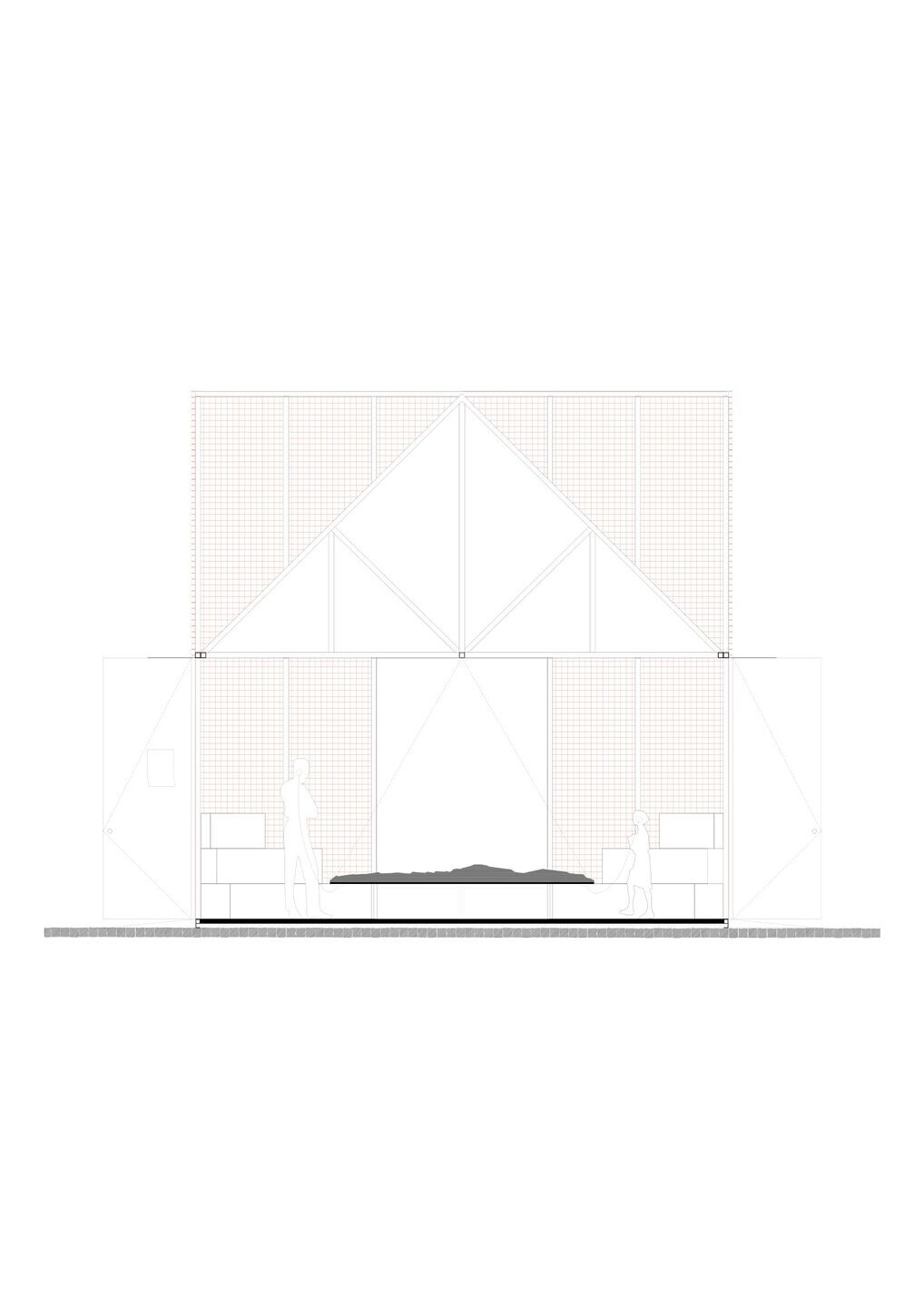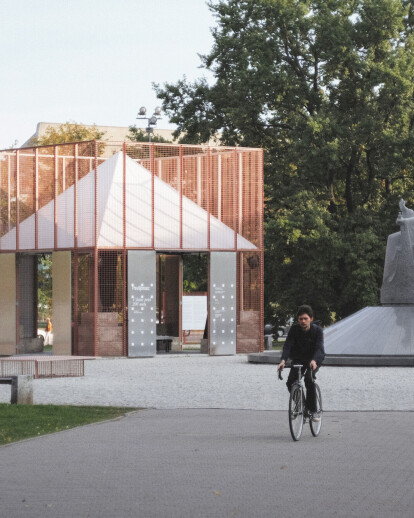In 2023 young emerging Lithuanian architect duo Dalia Puodziute Seniuniene and Julius Seniunas executed a pavilion entitled ‘Atlas’ - ‘Vilnius 200 years ago’ as a part of the celebration of Vilnius city 700th anniversary in Lithuania.
Lithuanian National Museum announced an open call for proposals to design a temporary pavilion to host a very important and sensitive exposition which should step out of the enclosed spaces of the museum and enter the city park in front of the museum building - in a UNESCO heritage old town of Vilnius, just in front of the Gediminas Castle hill. Succeeding to propose a new way of museum - an open exposition dispersed in the New Arsenal park, the project by an architects duo became a reality in the Spring of 2023.

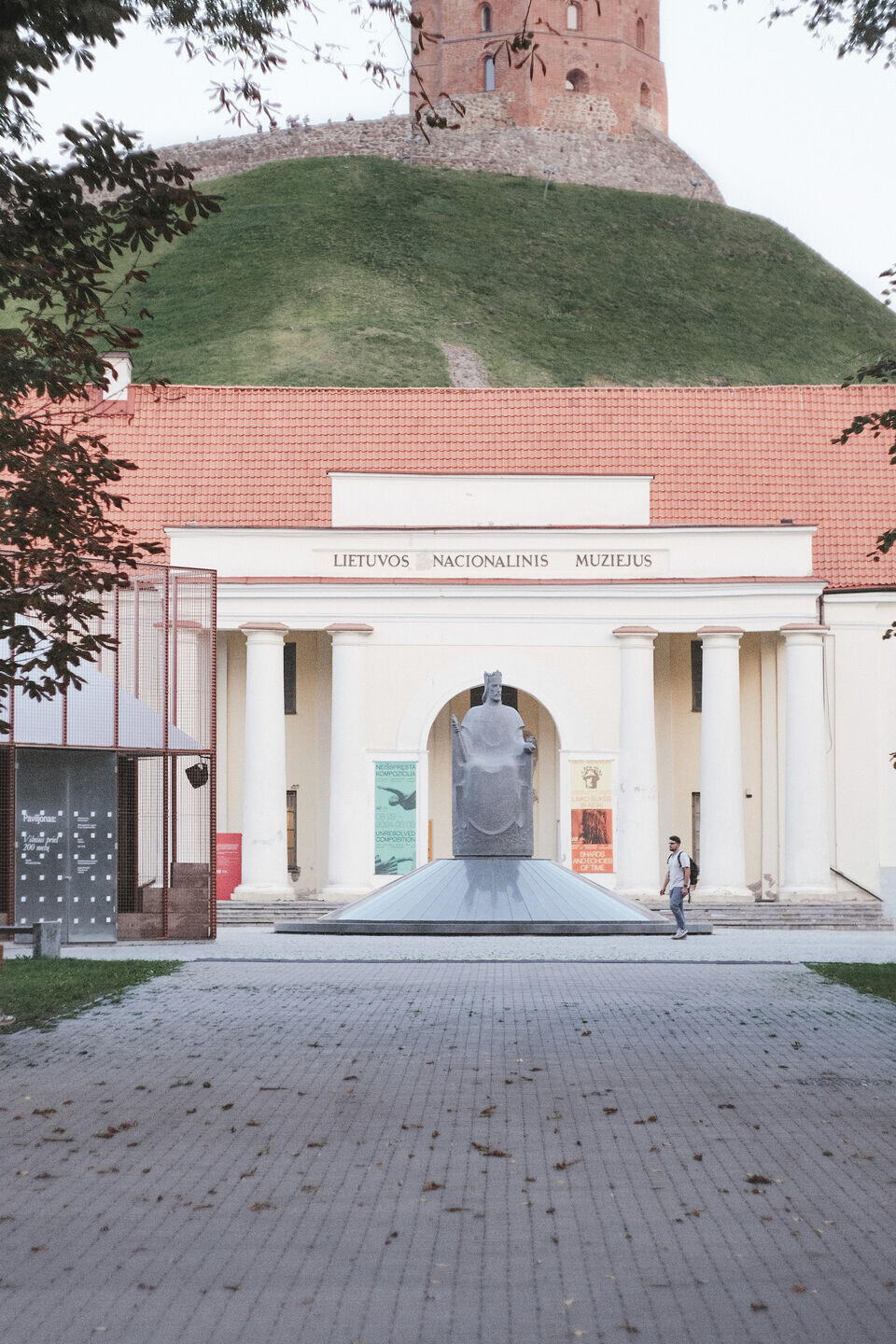
Throughout the half a year, the temporary pavilion ‘Atlas’ hosting an exhibition of Vilnius city 200 years ago became the most visited exhibition of Lithuanian National Museum. The temporary pavilion inhabited a never-seen-before model of Vilnius city meticulously recreated from recently discovered historical maps and drawings from the archives that the Lithuanian National Museum discovered and have brought to the daylight to compose this specific exhibition.

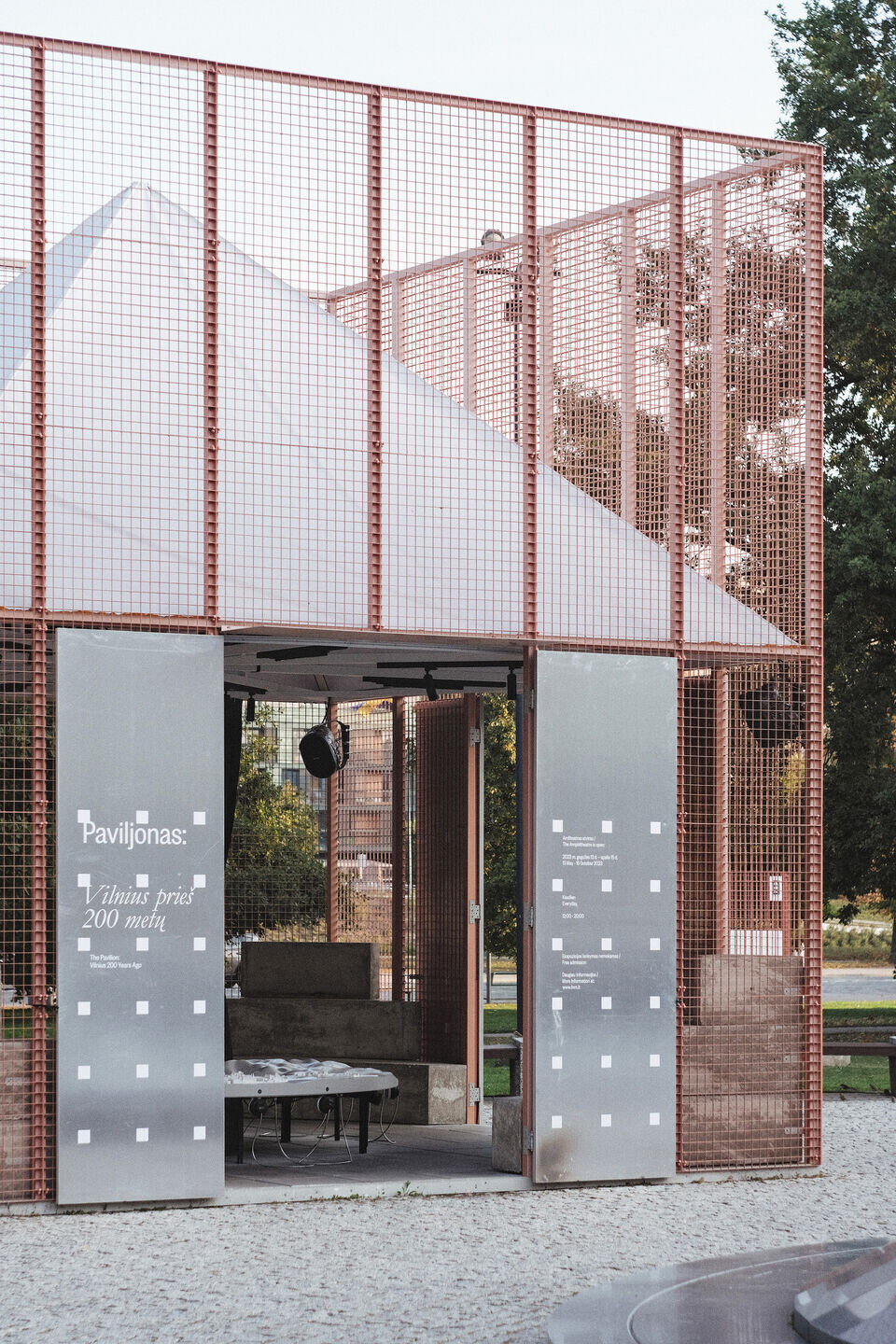
Dispersed type of the pavilion
Forming a strict grid of 16 objects scattered at the New Arsenal park intersecting with the existing park system as well as historical artifacts within the archeological context, the pavilion Atlas generated a series of diverse mediums to enable visitors to explore different layers of the historical exhibition material. The main 3D printed model of the Vilnius city was supported with ambient sound as well as histroical narratives and video projections, recreated vizuals were exposed on the 4 Walls of the pavilion, Rotonda hosted a historical map of Vilnius city printed on the inside of the curtain flowing in the wind.

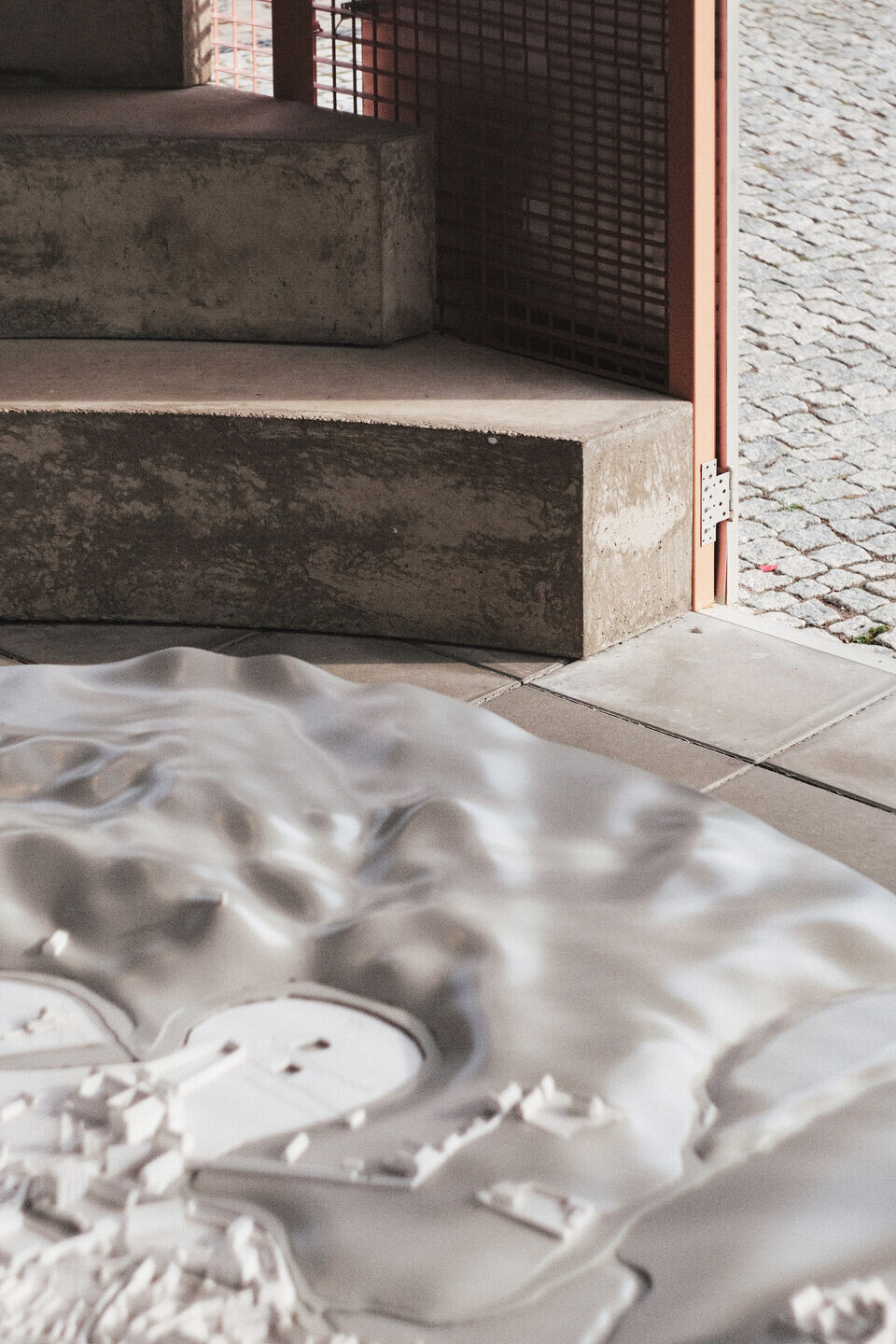
Simple, yet curious organization of the objects reacting to different park objects and backdrops, activates the area. The scattered objects of the pavilion could be approached differently from different sides, creating a diversity of narratives and leaving space and options for the citizens and travellers to explore the exposition on their own.
Amphitheater, Triptych, Rotonda, Walls, Forum, Flags, Stage, Info stands, etc. all became information carriers in an open-air museum, unified by the historical color of Vilnius old town as seen from above, imprinting the celebration of Vilnius 700th anniversary. It became not only the pavilion in a city but rather a city in a pavilion.
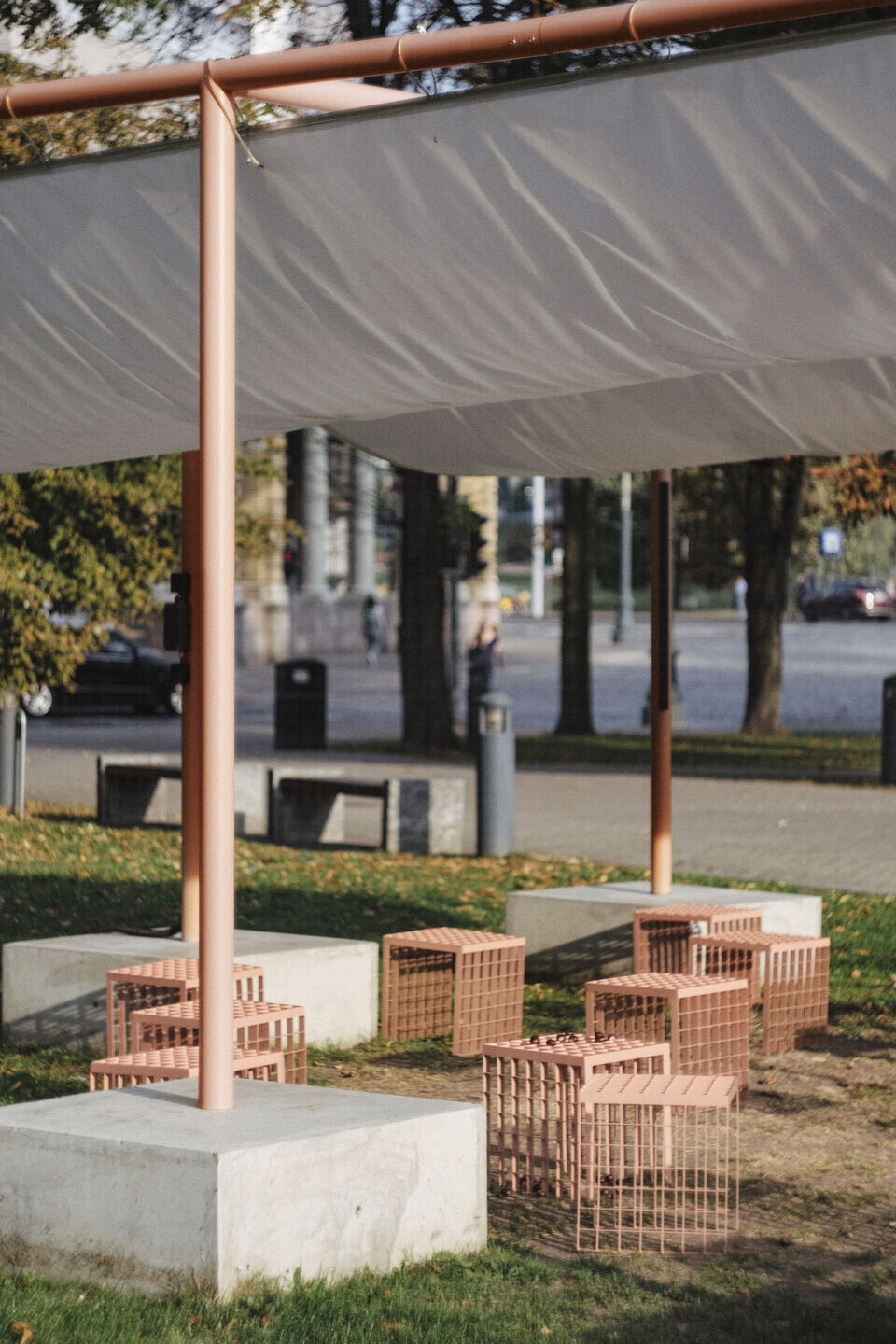
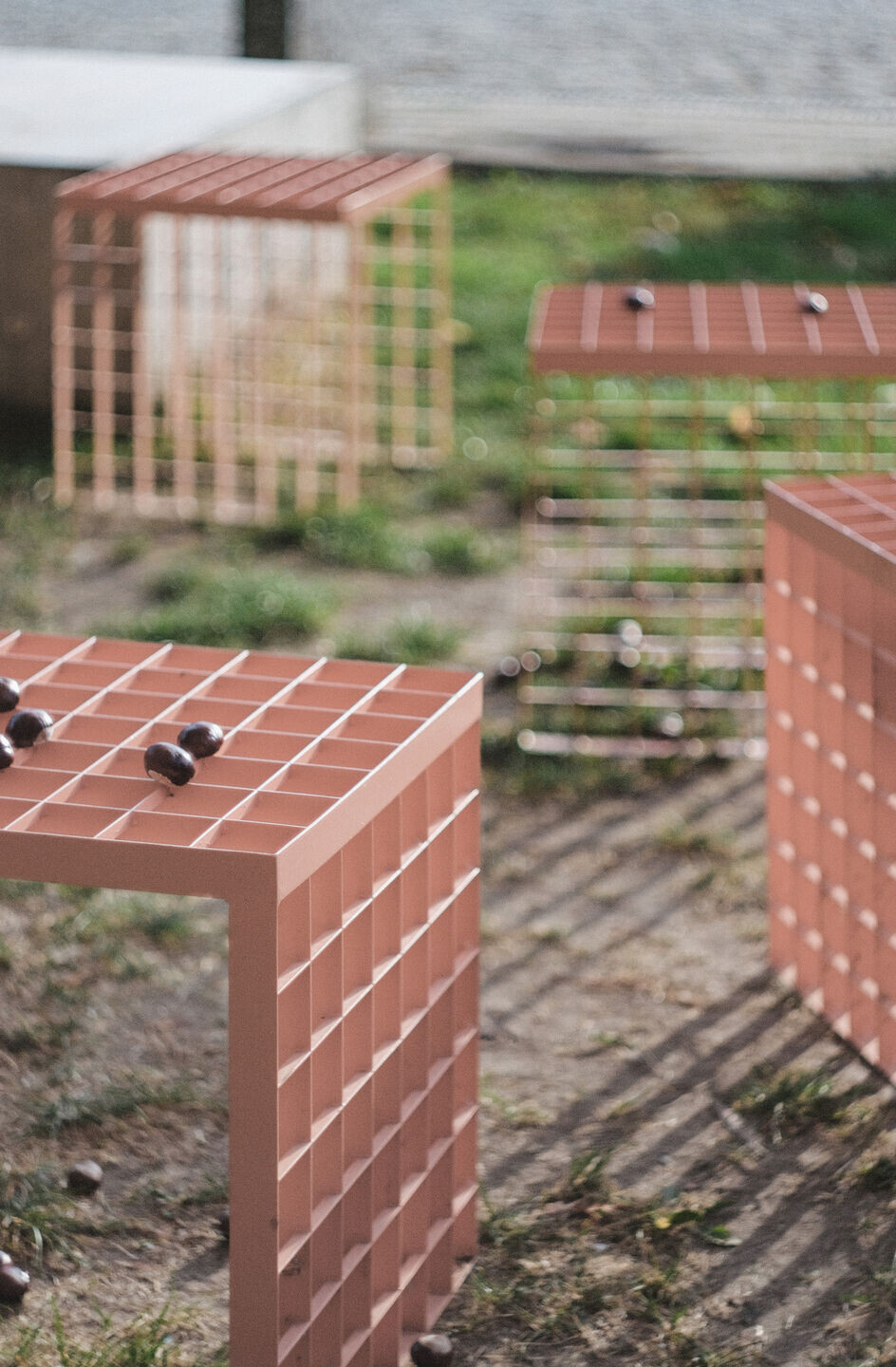
Material and color families
Considering the sensitive heritage context of the location, the decision was made to not interfere with the archeological layers of the ground and instead emphasize the importance of the locale by using above-ground foundations doubling their purpose as public benches.
Selective diversity of coloristic choices and materials encoded different ideas and archetypes. All foundations/benches were cast in concrete following the same grid, as well as Amphitheater concrete benches were used to stabilize the overall construction of the main object, calculated by the lifting forces of the pyramid tent roof.
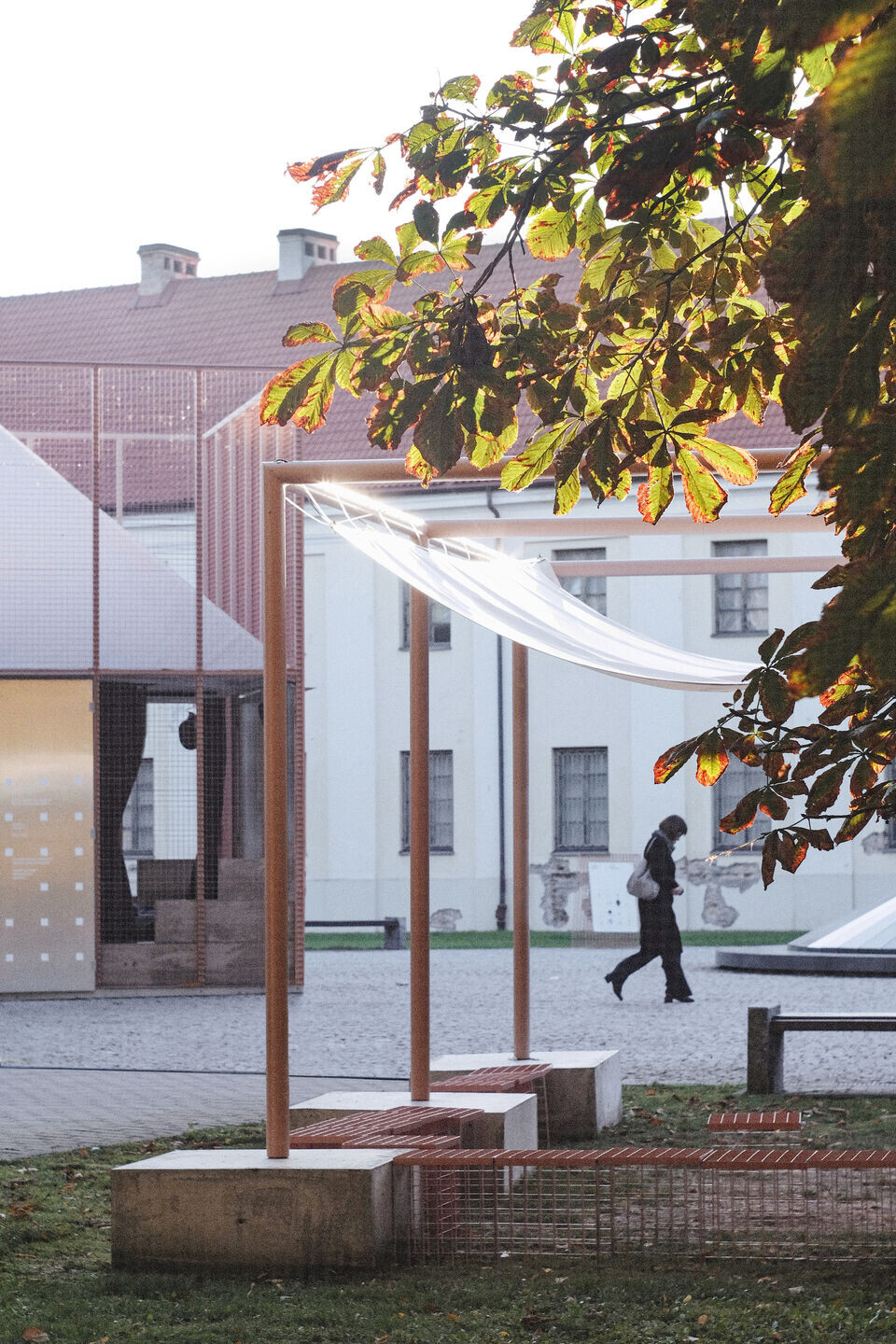
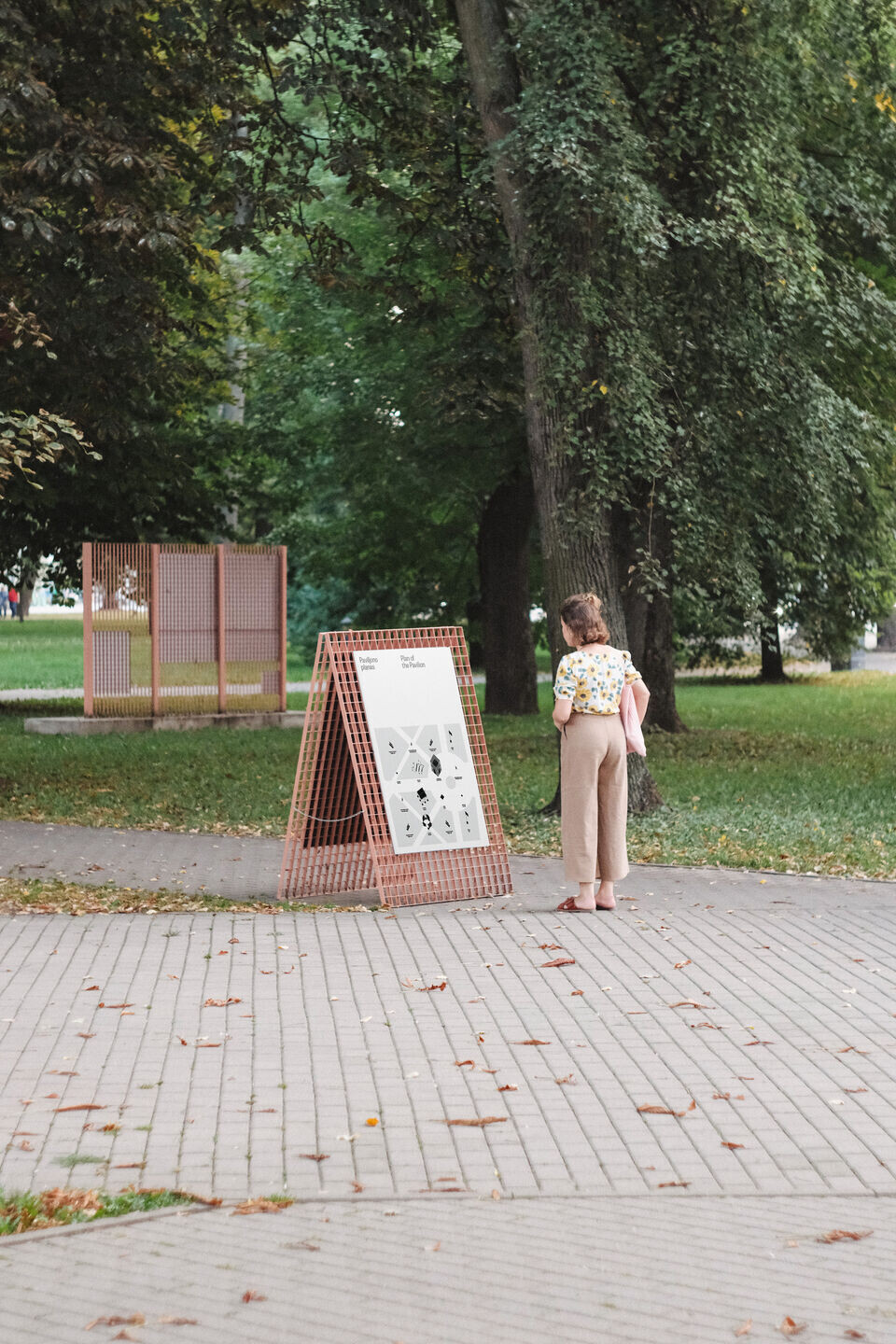
Transparent steel gratings and slender tubes powder coated in beige red colour were the main structural carriers subtly blending into the context and not covering the historical facade of the Lithuanian National Museum or the monumental King Mindaugas sculpture in the park.
Kinetic elements such as the aluminum doors of the Amphitheater, the outside surface of the expositional curtain of Rotonda, or perforated 2 Flags were designed as reflective objects, subtly blending in the green surroundings of the park. White color was only used for temporary tent roofs while technical objects, including sound, lighting, and visual system installations in the main objects as well as technical attachment systems of the exposition material were all selected in black color.
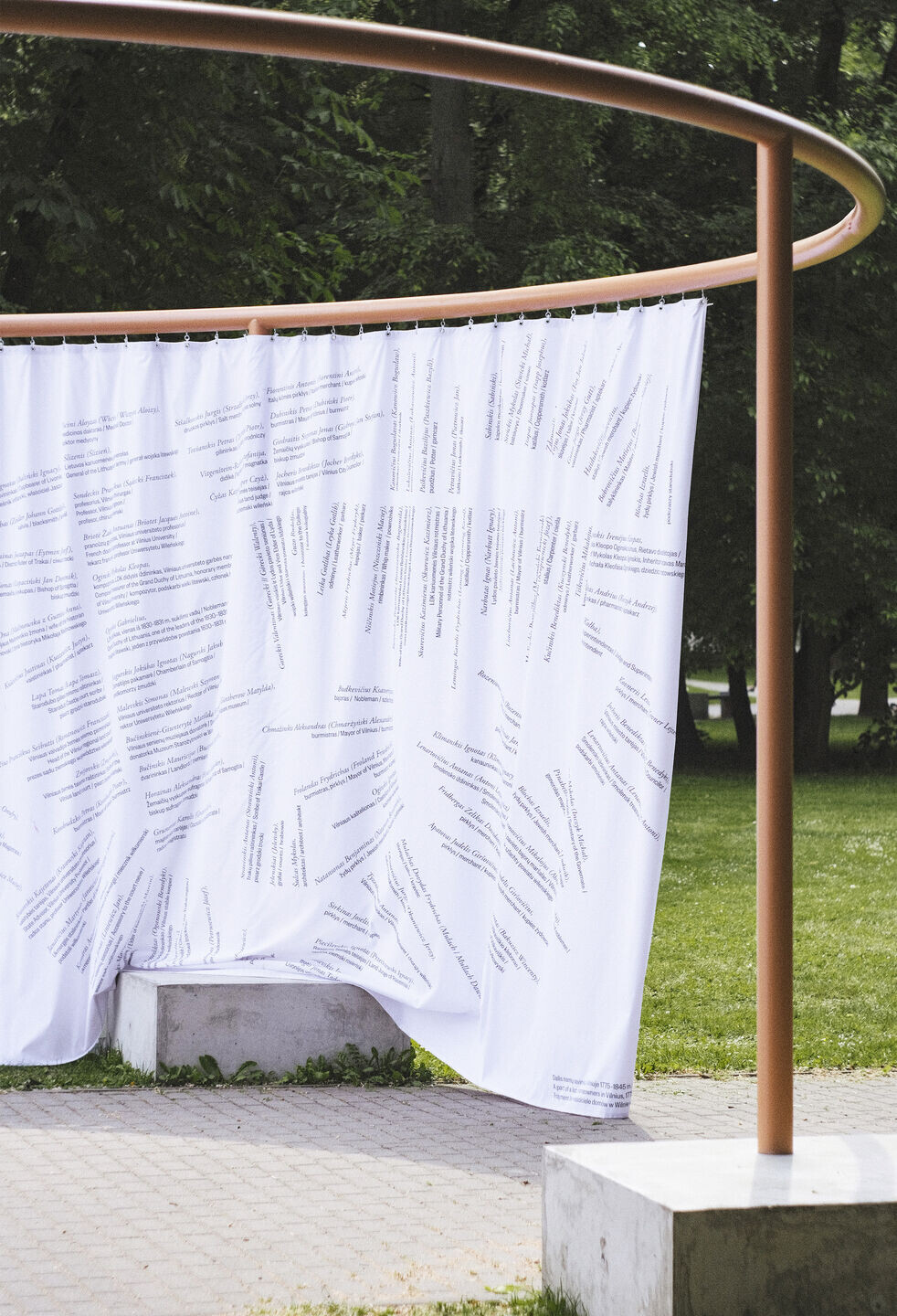
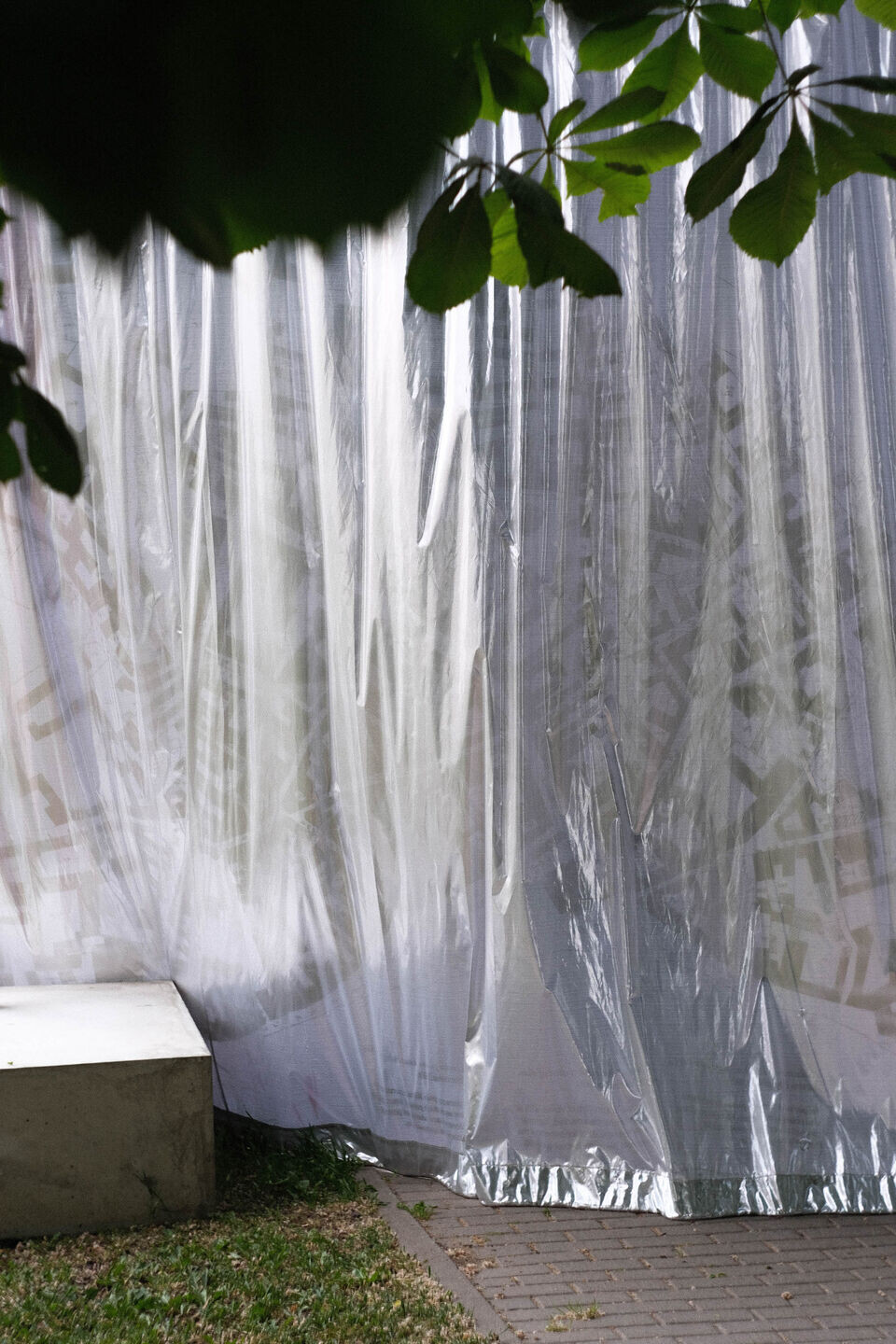
Adaptive reuse
The typology of a temporary pavilion always raises an essential question on how this structure could be reused? From the very start, it was designed in a way to be easily assembled, stored compactly, and smoothly reassembled in another situation. This enables the diversity of objects to create an ever-changing formula generating new scenarios in alternative contexts and are adaptive to the different purposes/locations/aspirations.
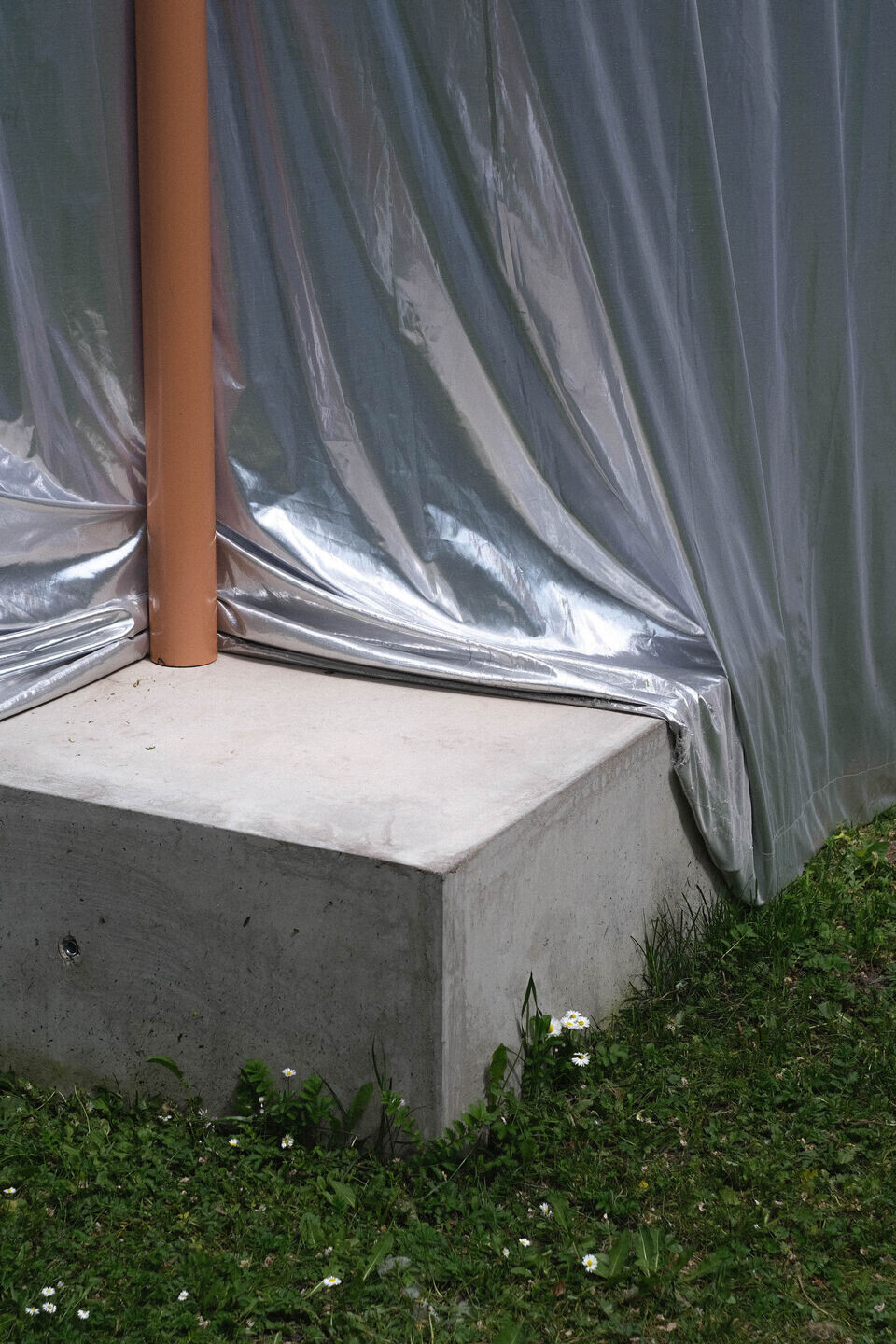
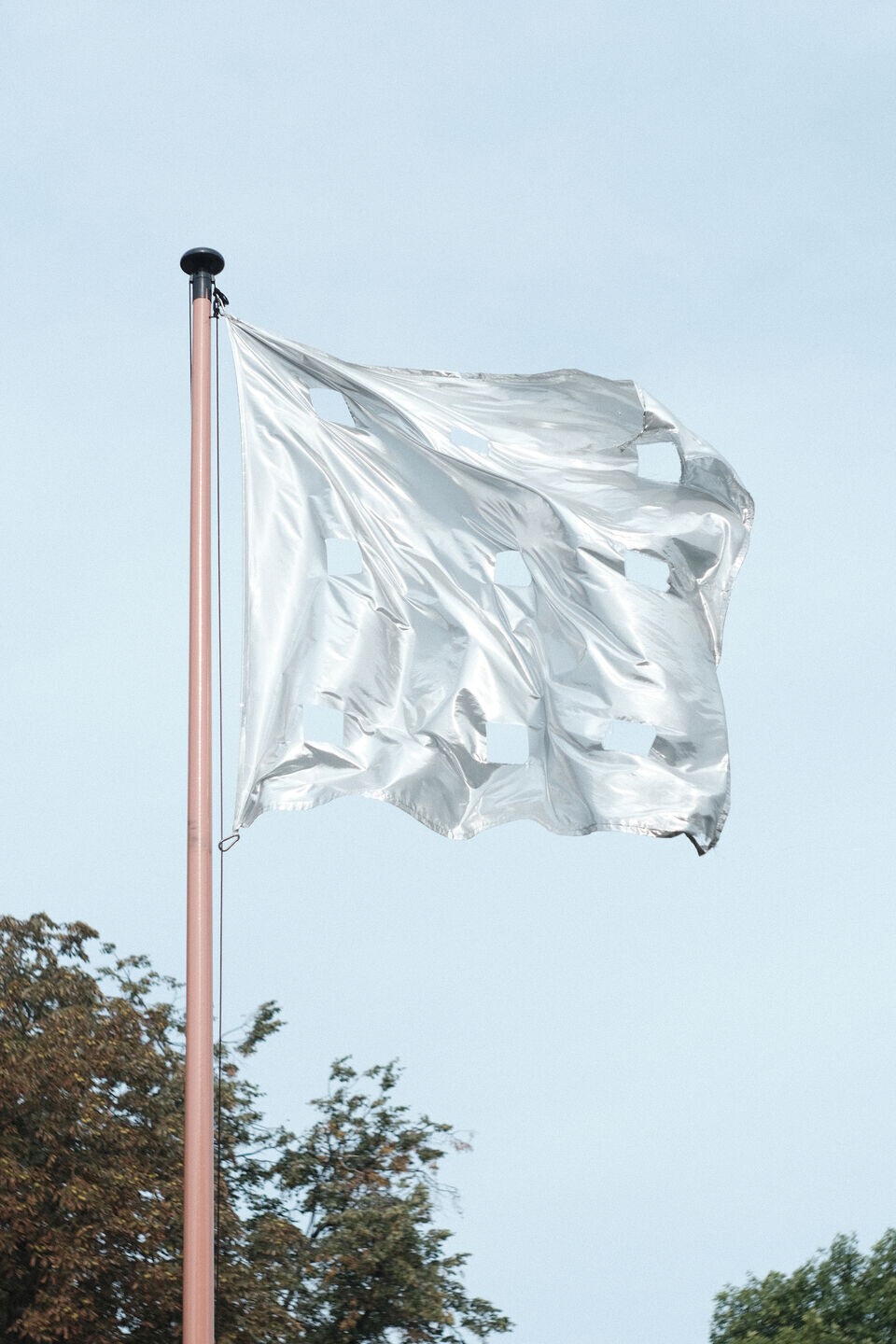
Team:
Architects: Dalia Puodžiūtė Seniūnienė & Julius Seniūnas
Project team:
Asta Ivanauskienė (project manager)
Sandra Šlepikaitė (project manager)
Rimantė Vaitekonytė-Mačiulienė (architect heritage specialist)
Mindaugas Kasiulevičius (structural engineer)
Building contractors: MB „Meistras pleistras“
Commissioner: Lithuanian National Museum
Competition organisers: Lithuanian National Museum Architecture Foundation
Photographs: Gabija Strockytė
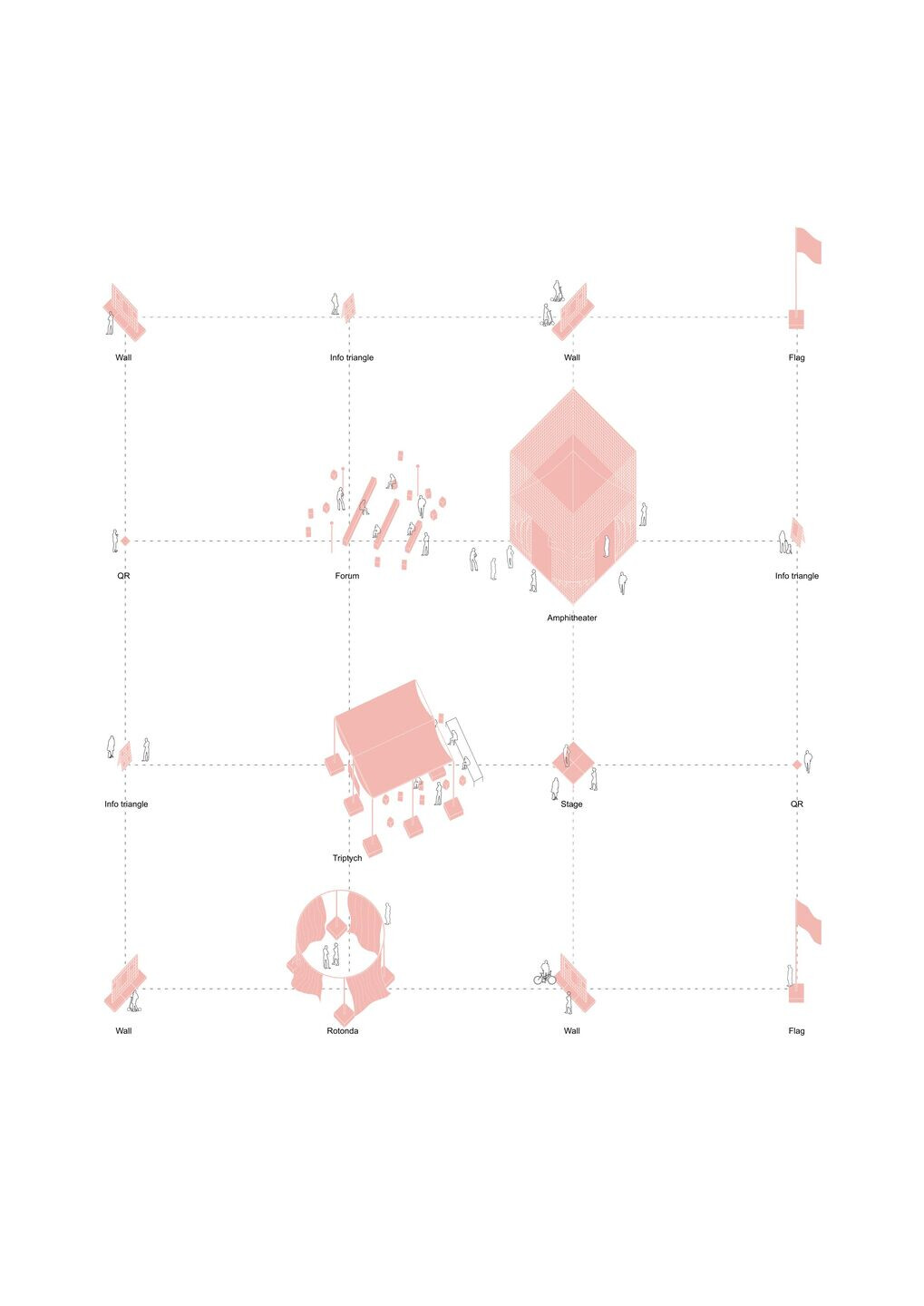

Materials Used:
Steel, textile, aluminum, concrete
